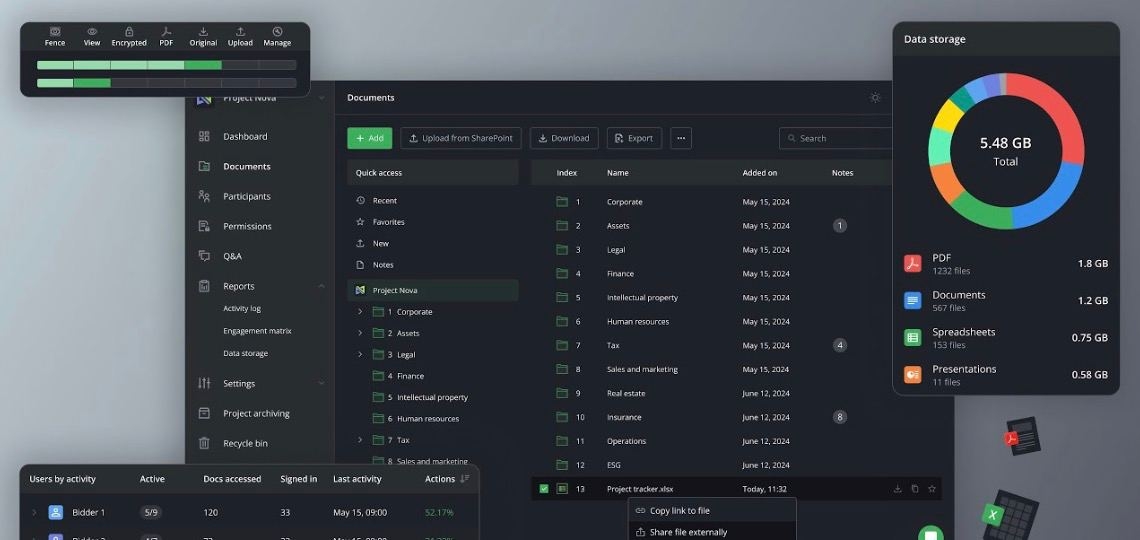For years, file management was treated like a back-office function — something you only noticed when it broke. Today, it’s right at the center of how teams move, collaborate, and get things done.
Whether it’s due diligence, compliance, or a client review, delays don’t usually happen because people don’t want to work. They happen because files are missing, duplicated, or buried in inboxes. Smarter document tools are solving that — not by adding more features, but by cutting friction where it matters.
The Old Way Slows Everyone Down
Let’s be honest: most teams still waste time finding documents. They dig through old folders. They click the wrong version. They email a file only to realize someone else has already updated it.
Even the best-intentioned teams fall into this trap, especially when documents live across shared drives, chat threads, and offline devices. It’s not always about discipline. It's about not having a system built for speed and clarity.
What’s changed recently is that teams have more options. And some of those options are smarter — not louder.
Simple Navigation Can Change the Pace of Work
Good tools don’t just store documents — they help you reach them faster. That might sound minor, but when you’re reviewing contracts or pulling financials for an investor, the difference between 5 minutes and 30 seconds adds up.
Smart platforms number files automatically, keep folders indexed, and allow fast filtering. If someone opens a workspace for the first time, they can immediately find what they need without a walkthrough. And for businesses handling hundreds or thousands of files, that’s not just helpful — it’s critical.
Collaboration Works Better When Everyone’s Looking at the Same Thing
Most problems with file-based collaboration happen because two people are working on different versions. One edits a doc. The other shares a PDF. By the time feedback circles back, no one’s sure what’s current anymore.
With shared digital workspaces, those problems vanish. Teams work from a single source of truth. Comments happen inside the document. Q&A stays tied to the context. And multiple reviewers can view and annotate at the same time — without overwriting one another.
It’s not just faster. It’s cleaner. And when timelines are tight, clarity beats speed every time.
Visibility into Activity Adds a Strategic Edge
There’s another benefit that’s often overlooked: activity tracking.
With modern platforms, you can see who opened what, when, and how often. During sensitive operations like M&A, fundraising, or external audits, this becomes incredibly useful.
If you’re sharing materials with a potential investor, for example, and they keep revisiting your financials but never open the pitch deck — that tells you something. You don’t have to guess where the interest is. You see it. And that allows for smarter follow-up and better timing.
Transparency isn’t about surveillance. It’s about awareness. The right tools offer it quietly — without adding extra steps.
Costs Go Down. Mistakes Go Down Further.
If you’ve ever printed out binders for a board meeting, you know the cost adds up fast. Printing, editing, scanning, rescanning — not to mention the risk of passing around outdated copies.
Digital systems eliminate all of that. They reduce paper waste. They simplify version control. And they give you clean logs that prove what happened, when — which can be crucial for regulatory and legal protection.
What used to require five tools and a lot of coordination now happens in one place — with less back-and-forth, and a lower chance of error.
To see how leading platforms compare in terms of organization, permissions, and usability, you can review a list of the best data rooms — many of which are already being used by companies across legal, finance, and tech sectors.
Final Thoughts: Simpler Doesn’t Mean Basic — It Means Thoughtful
Teams don’t want more tools. They want fewer tools that actually work.
Smarter file management isn’t about adding layers — it’s about removing blocks. The best systems give people structure without locking them in. They make things easy to find, easy to share, and hard to mess up.
Whether you're closing a deal, onboarding new hires, or managing compliance files, the way you handle documents affects the way you do business. And for most teams, the biggest gains don’t come from doing more. They come from making less effort go further.
The right tool helps you do exactly that — without getting in your way.


